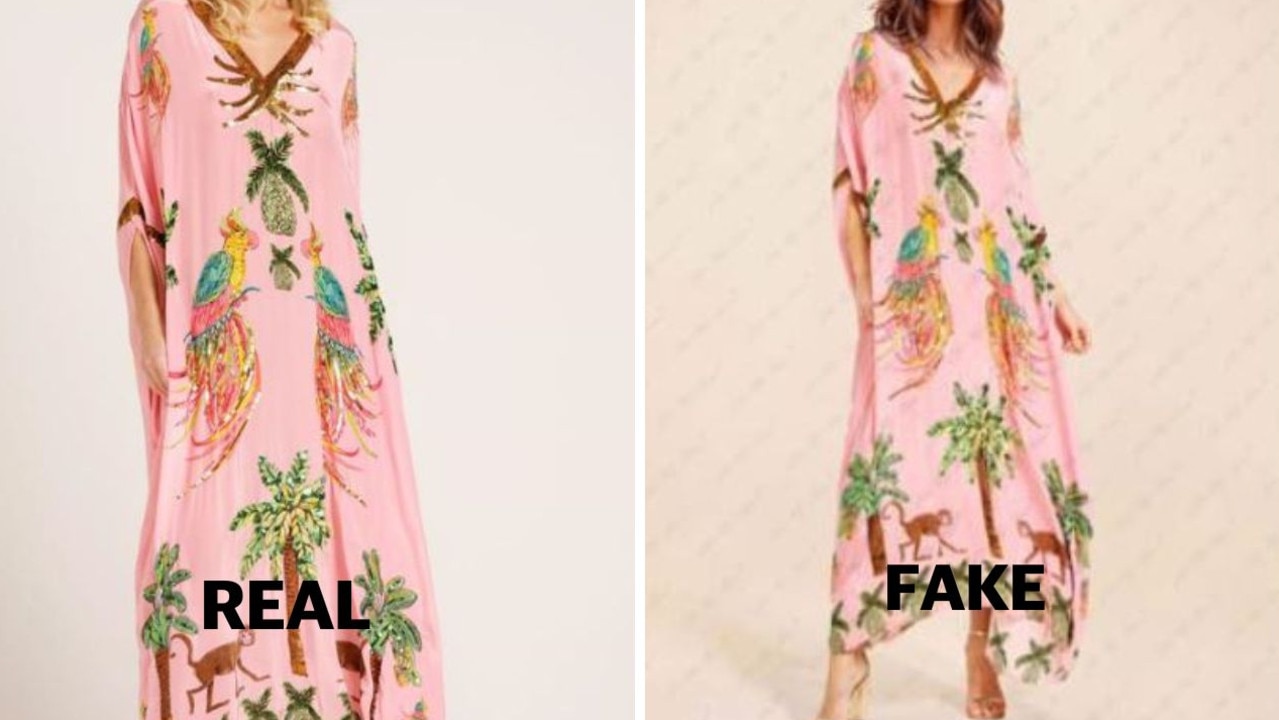Marc Clark exhibition: Inside 96 yo’s landmark art, working in Brisbane
His sculptures are Australian landmarks, and at 96, Marc Clark is still at work north of Brisbane. A retrospective of his work will be the first major exhibition at the new $5.5 million Redcliffe Art Gallery opening this year.

Brisbane News
Don't miss out on the headlines from Brisbane News. Followed categories will be added to My News.
Everywhere in Marc Clark’s humble home, there is art.
Paintings and sculptures, mostly his own, fill up every available space on the walls, on top of furniture, on window ledges, the bathroom shelf, above the kitchen window, and that’s before you even get to the garden.
In this suburban backyard in Deception Bay with its brick pavers and lattice work patio stands a small selection of the hundreds of sculptures Marc has created during his career – many of friends and colleagues who have since passed away.

As the wind chimes knock and the birds in the trees chirp, this contemplative space offers a warm embrace.
At 96 years of age, Marc doesn’t sugar coat the events of his life.
The sadness, joy, surprises and regrets he has experienced are conveyed with raw honesty and candidness.
Being commissioned to complete major memorial works for public display of captains James Cook (Fitzroy Gardens, Melbourne), Matthew Flinders (Mornington Park, Victoria) and William Bligh (The Rocks, Sydney) in the 1970s and 1980s were highlights of his career, but truth be told, it’s his abstract works that have brought him the most fulfilment.
“As my tutor used to say, art for art’s sake, money for God’s sake,” he says.
A retrospective of Marc’s work will be the first major exhibition at the new $5.5 million Redcliffe Art Gallery opening this year.
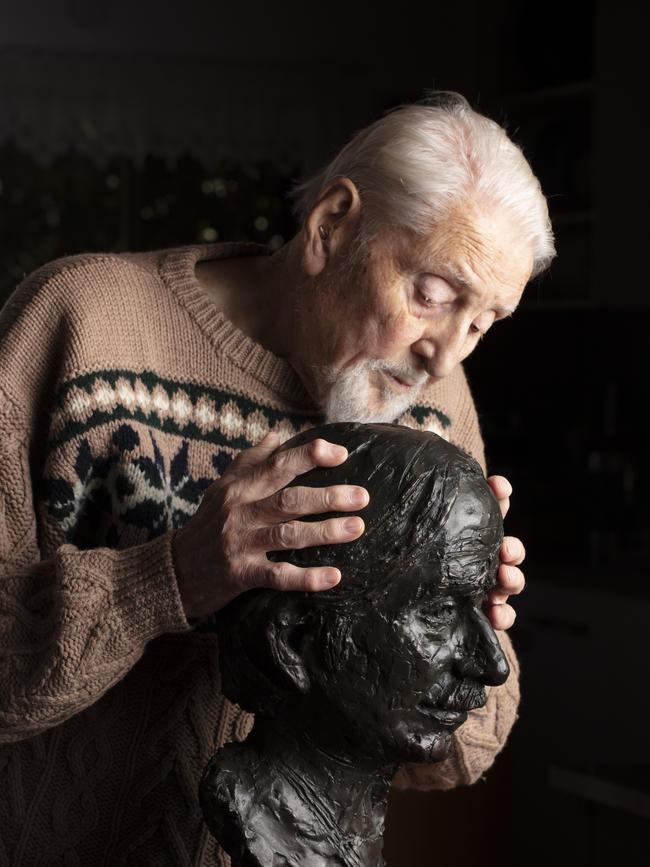
With his sculptures held in most major galleries around the country, a select few will be loaned for the exhibition titled Marc Clark: A Life in Art, comprising over 50 works.
Denise Sims, spokesperson for Art Galleries, Libraries and Museums in Moreton Bay says it’s an honour to host the exhibition.
“The community is proud to recognise the achievements of this humble yet supremely talented man. This is a once-in-a-lifetime opportunity that art enthusiasts simply can’t miss,” she says.
Other major works by Marc include statues of Australia’s first prime minister Edmund Barton (Canberra) and botanist Ferdinand von Mueller (Botanic Gardens, Melbourne), the bronze eternal flame that’s part of the Rats of Tobruk Memorial (Anzac Parade, Canberra), and contributions to the Parliament House Art Collection including Alpha and Omega, Ancient Sites and Monument to a Hero II.
Closer to home the Queensland Art Gallery holds his sculpture Stairway to Nowhere (1975) in its collection.
Marc is sitting in his red velvet armchair in the lounge room of the small Dutch-style home he shares with his wife Waltraud, 78.

Their greyhound Prema – Sanskrit for “love” – is sprawled over Waltraud’s lap as Marc opens a book to a page showing a gleaming piece of work he made in 1971 titled Votive – an eye-shaped sculpture made of stainless steel and brass.
“That’s the sort of thing that I find much more …” he drifts off, but the brightness in his eyes says it all.
Born in 1923 in Greater London, Marc displayed a talent for drawing from a young age, which his mother and four sisters encouraged.
RELATED READS:
Look up with Brisbane’s backyard astronomers
The man with the best job in Brisbane
He hated school – “it was a ghastly place” – where getting banged on the knuckles with a steel ruler was the norm and weekly art classes involved drawing the cleaner’s bucket and mop in pencil week after week.
His one fond memory is of a kindly history teacher who allowed him to illustrate their lessons with watercolours and pinned them up around the classroom.
Marc also loved being in the Sea Scouts and in his own time made wood carvings with a knife he treasured.
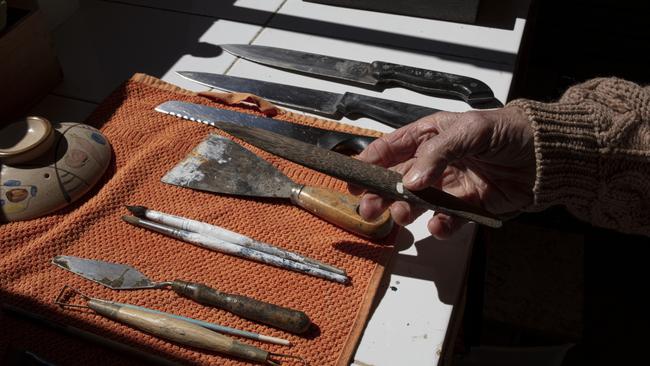
When he left school, his father, an ex-serviceman and cleric, asked him what he wanted to do with his life.
He’d long given up on Marc becoming a boxer because he lacked the “killer instinct”.
“I said, ‘I’d like to go to art school, father’, and he was taken aback a bit. He said, ‘All right, well if that’s what you want, I’ll help you to do it, but you have to get really serious about it’.”
Life opened up to him at the Sidney Cooper School of Art in Canterbury.
“It really is where my education began,” he says.
In the years that followed he studied modelling, stone and wood carving, life drawing, composition and art history with the most conservative to the most eccentric teachers inspired by music, poetry and art.
A visit to the British Museum as a young boy and its ancient Egyptian collection had sparked his interest in sculpture.
“I looked at the figurative work and saw a sincerity in it – there was a mystique about it that intrigued me,” Marc says.
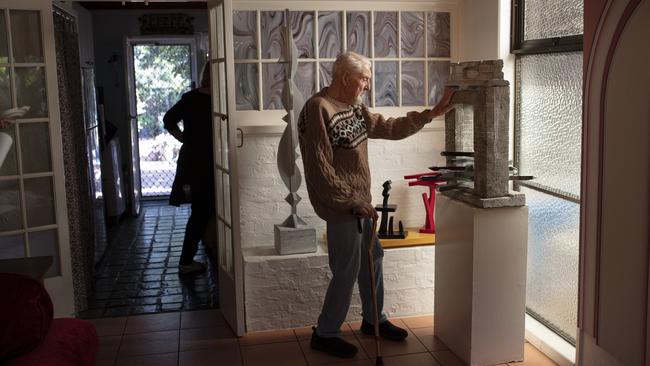
One of Michelangelo’s famous marble Slaves also had a profound impact.
“I thought it was beautiful. It made a big impression on me.”
His talent blossomed, but was put on hold in 1941 when at the age of 18 he volunteered to join the Royal Navy during World War II. He ended up in His Majesty’s Army instead, fighting the war in North Africa, Italy and Austria and learning about life and love and death in an entirely different way.
After returning home in 1947, he received one of just seven scholarships for sculpture at the prestigious Royal College of Art in London where he spent the next three years training under Frank Dobson – one of Britain’s most influential sculptors of the 20th century.
“He was a really nice old man, very fatherly,” Marc says.
Soon his art was being picked up by museums and galleries across Europe, and though he’d hoped to move to France where he’d spent a lot of time working out of one of his tutor’s studios, it wasn’t to be.
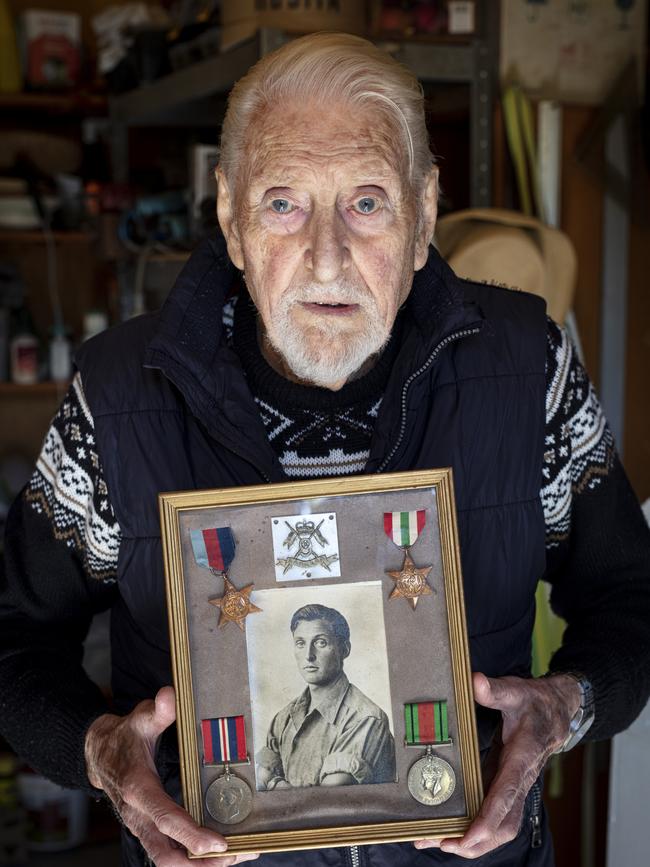
Instead, he got a call in 1962 with an offer to teach at the Caulfield Technical College in Melbourne. Ready for a new adventure, he accepted.
Before long, he took up the post of drawing master and later head of sculpture at the National Gallery of Victoria Art School, which later became the Victorian College of the Arts.
He remained in this position until his retirement in 1984 and later moved to Queensland seeking sunnier skies and warmer weather.
Marc reaches for a photo of himself with a student.
“There’s a happy little man. That was when I was teaching at VCA. Very lucky. She was one of my students. She had a nervous breakdown. She had the most beautiful hair and cut it all off. We got her back on the straight line again. She was a nice kid. They were all lovely,” he says.
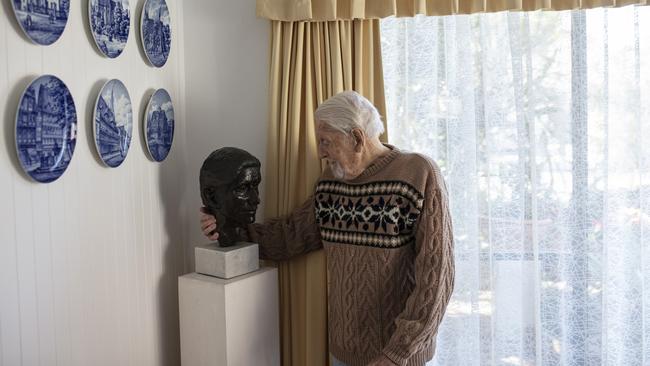
Lenton Parr, sculptor and ex-director of the VCA, who died in 2003, once wrote about Marc: “(Those) who have been associated with him as friends and colleagues or who have been his students will go on to describe how fortunate his presence here has been for them and how great has been his contribution to Australian art and education. They know him – as I do – as a sincere and devoted man, humane and tactful in his dealing with others and always willing to share with them the many skills, insights and enthusiasms that inform and sustain his own creative life.”
To this day, Marc continues to sculpt from his small studio at the back of the house.
“I always found the beauty of timber and the handling of modelling clay and tools very satisfying. It’s a way of life,” he says.
It’s not as easy as it used to be however, as his knees don’t support him like they used to.
“I like to stand and work,” he says. The cane leaning against the armchair and the walker parked in the corner of the room help him get where he needs to go, and though he has lost 80 per cent of his hearing, he manages well enough.
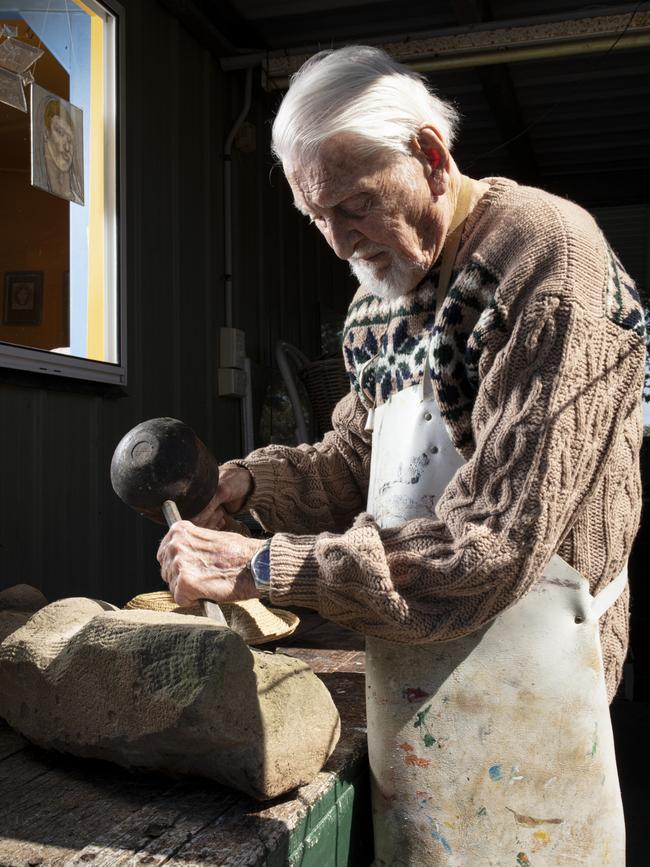
Waltraud, whom he met at a dinner party in Melbourne and married in 1983, has been by his side during the whole visit gently offering her care, warmth and guidance.
Marc never had children and was married twice before they met.
“Marc is looking back at a huge output of work because he’s a compulsive worker, everything is art, it is foremost in his mind. He never will change,” Waltraud says.
Originally from Germany, she came to Australia in 1970 seeking adventure. Working as a psychiatric nurse, she later developed a passion for stained glass art, evident in her work that hangs throughout the home.
Marc says: “The highlight of my life has been to be happily married to Waltraud for 35 years and have support for what I’m trying to do.”
A small space – not even a room – that leads from the hallway to the guest bedroom is where Marc spends most of his time these days printmaking and painting.
“As a sculptor of my time you never used colour, you never painted; you weren’t taught how to paint, you were a sculptor.
“The past two years I’ve been doing these paintings. They’re all geometric and you have to have very steady hands,” he says. They will be shown together as a group in the upcoming exhibition.
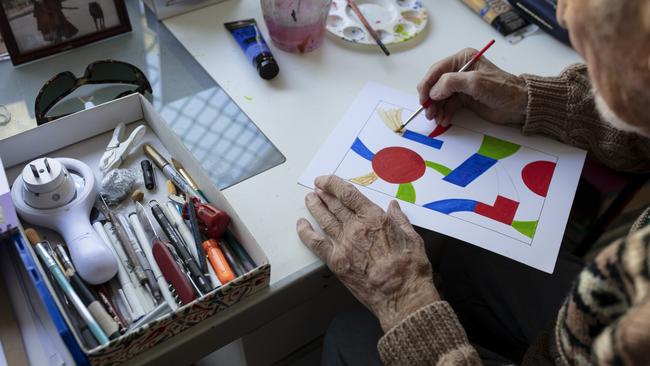
Looking back at his life well lived, Marc is full of gratitude.
“I regard myself as being very fortunate that I survived the war and that I was able to continue with my career which had been disrupted, a lot of other people likewise,” he says.
As for the secret to a long and happy life?
“I’m not wise,” he laughs.
“I just look forward to the next piece of work I’m going to do.”


